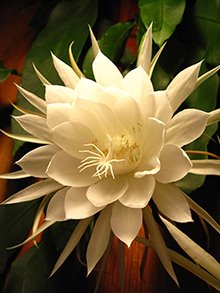
The Painted Lady butterfly.
Hundreds of these little gems are flocking to the chamisa to supp on the last beads of nectar before the first frost comes. Their bodies look as though they are made of gold dust. What a delight they've been.
This year, unlike any other in the 13 years I've lived in New Mexico, is full of hundreds upon hundreds of painted ladies. Recently I was walking down the arroyo amidst a vast avenue of chamisa bushes. All around me these magnificent creatures were flying and lighting on the blooms, dipping their proboscis into them and sipping nectar. One bush had at least 50 butterflies drinking from it, and when I approached on tip toes they caught site of me and elevated into the air all at once. What a wonder. I once heard of a man who said the collective flap of butterflies' wings could create a hurricane. 23 million Monarchs gather in Mexico so I would imagine all of them lifting at once could indeed create some energy. For more on this theory click here.
Regardless of whether it's true or not, just the idea of this movement and how it impacts the earth is a mighty fine thing to ponder. Such fragility and strength, all in one tiny being; a being that actually tastes with the front of its legs! Walking in the arroyo I watched the ladies and then I wondered what the difference was between these, and Monarchs. Just then an orange and black butterfly, twice the size and with double wings flew by. Wonder and ye shall receive. :-)
This is the story of the geneology of the monarch butterfly and the amazing journey they make each year, which I lifted from the World Wildlife Organization's website, here.
The Monarch of Migration
The Monarch butterfly is known by scientists as Danaus plexippus, which in Greek literally means "sleepy transformation." The name, which evokes the species' ability to hibernate and metamorphize, is actually inspired by the Greek myth of Danaus, in which the daughters of Danaus, king of Libya, flee Libya for Greece in order to avoid marrying their cousins. The long, migratory journey of the Monarch butterflies is reminiscent of the daughters' flight.
Adult Monarchs possess two pair of brilliant orange-reddish wings, featuring black veins and white spots along the edges. Their wingspan is about four inches, and they weigh less than half an ounce. Males, who possess distinguishing black dot (stigmata) along the veins of their wings, are slightly bigger than the females.
Each adult butterfly lives only about four to five weeks. But one of the many wonders of the Monarchs is the annual creation of a unique "Methuselah generation." As autumn approaches in their sites of migratory origin, a very special generation of butterflies is born. Unlike their parents, grandparents, great-grandparents, and great-great-grandparents -- all of whom had ephemeral lives measured only in weeks -- these migratory butterflies survive seven or eight months. In human terms, given our average life span of 75 years, this would be like having children who lived to be 525 years old!
This generation performs the incredible feat of flying from Canada and the United States to the center of Mexico -- after which they begin the northward journey again. Once they reach the United States, a kind of relay race begins: their short-lived offspring, with only four or five weeks to live, continue making the trek northward over several generations.
Of all migrations by small creatures, few are as astonishing as the one performed by the Monarch butterfly. The embodiment of fragility, these insects travel between 1,200 and 2,800 miles or more between their starting and ending points -- a feat without parallel. What is even more remarkable is that the ones that return to the places where Monarchs hibernate have never been there before. These are the great-great-great-grandchildren of those that performed the intrepid journey from southeast Canada and the United States to central Mexico.
Like several species of birds, bats and whales, the Monarch butterfly of Canada and the United States migrates to places where the climate is less extreme. Winters are too cold in the places where the butterflies reproduce; Monarchs would not be able to withstand either heavy snowfall or the lack of plants on which larval caterpillars feed. As such, the Monarch heads south each fall, where it will stand a greater chance of survival-as well as the chance to "return" to reproductive sites in North America and give rise to future generations of reproductive adults that will complete the annual cycle.
The Monarch butterflies that migrate southward in the autumn are guided by the sun's orbit as they travel through North America. Even on cloudy days they stay on track thanks to an internal biological compass that functions according to the movement of the sun.
The migration moves at a pace of about almost 50 miles a day, though there are some butterflies that have flown up to 80 miles in a day. Throughout the migration, they continue to store and replenish energy each day by extracting nectar from flowers they encounter along the way. But the butterflies also suffer from illnesses and infections that can be fatal, and must face other dangers including bad weather, predation by birds during hibernation, and big losses in the population due to winter storms.
At the end of October and the beginning of November, after traveling two months, the butterflies settle into hibernation colonies in the mountains of central Mexico, where the States of Mexico and Michoacan meet. There they will spend the winter hibernating.
From mid-November until mid-February, the Monarchs' hibernation colonies remain relatively stable. During the second half of February, when temperatures rise and humidity decreases in the forests, the butterflies come down from the slopes to mate. And the butterflies that survive the hibernation in Mexico return in the spring to the southern United States.
Perhaps these magnificent creatures have come here to symbolize our own transformation and a call to the dance of joy, even in these uncertain times.



















The butterflies in my photos are not Monarch, as it turns out, but very likely Painted Ladies. But the sentiments of the post remain the same. Thank you to those who set me straight!
ReplyDelete